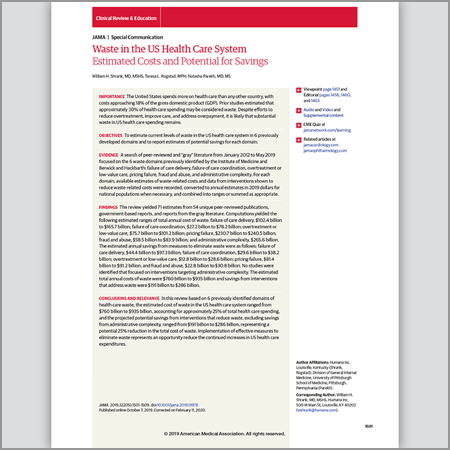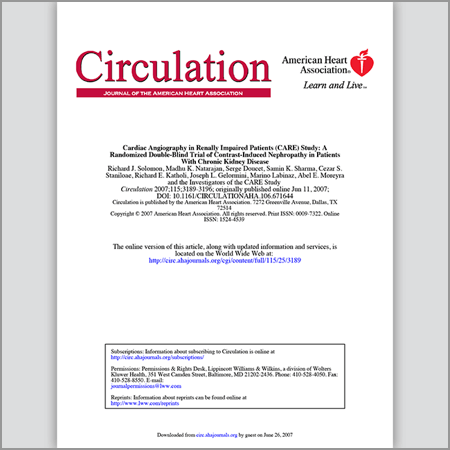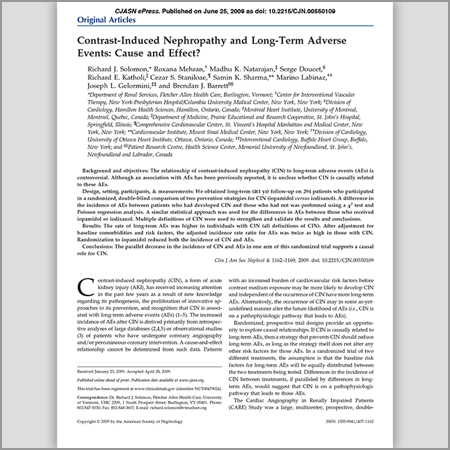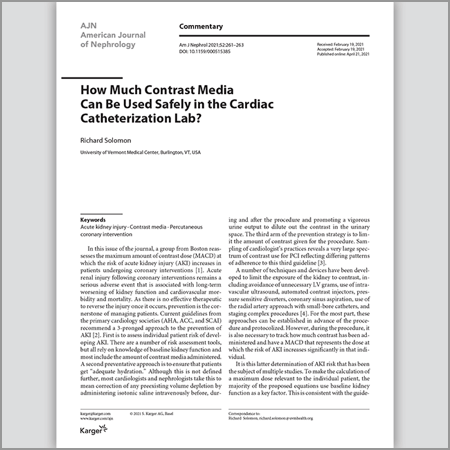
The individuals who appear are for illustrative purposes. All persons depicted are models and not real patients or healthcare professionals.
ISOVUE® (Iopamidol Injection) Imaging Bulk Package is the first FDA-approved contrast medium designed for multidose use—multiple single doses for multiple patients in the computed tomography suite and angiography procedures.
How to Order
ISOVUE® (Iopamidol injection) Imaging Bulk Package
ISOVUE® -300* (Lopamidol Injection 61%) Imaging Bulk Package** |
|
|---|---|
| Description | NDC Number |
| Ten 200 mL bottles | 0270-1315-45 |
| Six 500 mL bottles | 0270-1315-95 |
ISOVUE® -370* (Lopamidol Injection 76%) Imaging Bulk Package** |
|
| Description | NDC Number |
| Ten 200 mL bottles | 0270-1316-45 |
| Six 500 mL bottles | 0270-1316-95 |
*Concentration (mg/mL)
**For use only with an automated contrast injection system or cleared for use with this contrast
To order, call Bracco:
1-877-BRACCO-9
(1-877-272-2269)
or visit us online at:
MyOrders.Bracco.com

The individuals who appear are for illustrative purposes. All persons depicted are models and not real healthcare professionals.
Reimbursement Support Information
Your one-stop resource for coding, reimbursement support, and education.
HCPCS Code
- ISOVUE Imaging Bulk Package should be coded under Q9967: LOCM 300-399mb/mL iodine, 1 mL.
CMS Hospital Outpatient Prospective Payment System
- Under HOPPS, reimbursement for ISOVUE Imaging Bulk Package is bundled in with the primary procedure and paid under the relevant Ambulatory Payment Classification. Please continue to include Q9967 on your charge master to assist CMS with future rate setting.
Medicare Physician Fee Schedule
- The MPFS is used in non-hospital sites including independent diagnostic testing facilities and physician offices
- Under MPFS, ISOVUE Imaging Bulk Package is separately reimbursable from the primary procedure. Reimbursement rates change on a quarterly basis and are including in the CMS ASP Pricing files
- Contrast agents are subject to the JW and JZ Modifiers under MPFS. Please use the JW Modifier to identify waste, and the JZ Modifier to indicate when there has been no waste.
Commercial Payors
- Commercial payors' policies and contracts can vary greatly across the country. Please check your individual agreements to find out how reimbursement for ISOVUE Imaging Bulk Package may impact your site.

Visit the Bracco Reimbursement Site
Research Library
The CARE Study
Cardiac Angiography in Renally Impaired Patients (CARE) study: A randomized, double-blind trial of contrast-induced nephropathy in patients with chronic kidney disease
Disclaimers
The information provided is general reimbursement information for Bracco products. It is not legal advice, nor is it advice about how to code, complete or submit any particular claim for payment. Although we supply this information based on our current knowledge, it is always the provider’s responsibility to determine and submit appropriate codes, charges, modifiers and bills for services that were rendered. This coding and reimbursement information is subject to change without notice. Payers or their local branches may have their own coding and reimbursement requirements and policies. Before filing any claims, providers should verify current requirements and policies with the payer.
CPT® copyright 2024 American Medical Association (AMA). All rights reserved.
Fee schedules, relative value units, conversion factors and/or related components are not assigned by the AMA, are not part of CPT, and the AMA is not recommending their use. The AMA does not directly or indirectly practice medicine or dispense medical services. The AMA assumes no liability for data contained or not contained herein.
CPT is a registered trademark of the American Medical Association.
![]() IMPORTANT SAFETY INFORMATION
IMPORTANT SAFETY INFORMATION
ISOVUE-300, -370 Imaging Bulk Package is NOT FOR INTRATHECAL USE.
WARNINGS AND PRECAUTIONS | Severe Adverse Events-Inadvertent Intrathecal Administration
Serious adverse reactions including: death, convulsions, cerebral hemorrhage, coma, paralysis, arachnoiditis, acute renal failure, cardiac arrest, seizures, rhabdomyolysis, hyperthermia, and brain edema have been reported due to the inadvertent intrathecal administrations of iodinated contrast media that are not indicated for intrathecal use.
INDICATION:
ISOVUE®-200, -250, -300, -370 (Iopamidol Injection) solution
ISOVUE®-300, -370 (Iopamidol Injection) solution Imaging Bulk Package is indicated for:
- angiography in adults throughout the cardiovascular system including cerebral and peripheral arteriography, coronary arteriography and ventriculography, selective visceral arteriography and aortography, peripheral venography (phlebography),
- in pediatric patients for angiocardiography
- in adult and pediatric intravenous excretory urography and contrast
- CT Head Imaging (to refine diagnostic precision in areas of the brain which may not have been satisfactorily visualized)
- CT Body Imaging (enhancement of computed tomographic images for detection and evaluation of lesions in the liver, pancreas, kidneys, aorta, mediastinum, abdominal cavity, pelvis and retroperitoneal space).
ISOVUE-300, -370 Imaging Bulk Package is for use only with an automated contrast injection system, contrast management system, or contrast media transfer set approved or cleared for use with ISOVUE-300, -370 Imaging Bulk Package.
ISOVUE-300, -370 Imaging Bulk Package is NOT FOR INTRATHECAL USE.
IMPORTANT SAFETY INFORMATION:
WARNINGS AND PRECAUTIONS
Severe Adverse Events-Inadvertent Intrathecal Administration Serious adverse reactions including: death, convulsions, cerebral hemorrhage, coma, paralysis, arachnoiditis, acute renal failure, cardiac arrest, seizures, rhabdomyolysis, hyperthermia, and brain edema have been reported due to the inadvertent intrathecal administrations of iodinated contrast media that are not indicated for intrathecal use.
Special attention must be given to insure that this drug product is not inadvertently administered intrathecally.
Caution must be exercised in patients with severely impaired renal function, those with combined renal and hepatic disease, or anuria, particularly when larger or repeated doses are administered.
Clotting
Clotting has been reported when blood remains in contact with syringes containing nonionic contrast media. Serious, rarely fatal, thromboembolic events causing myocardial infarction and stroke have been reported during angiographic procedures with both ionic and nonionic contrast media, therefore meticulous angiographic techniques are recommended in addition to minimizing the length of the procedure to help decrease in vitro clotting.
Patients with Multiple Myeloma or Paraproteinemia
Radiopaque diagnostic contrast agents are potentially hazardous in patients with multiple myeloma or other paraproteinemia, particularly in those with therapeutically resistant anuria. The risk in myelomatous patients is not a contraindication; however, special precautions are required.
Patients with Sickle Cell Disease
Contrast media may promote sickling in individuals who are homozygous for sickle cell disease when injected intravenously or intraarterially.
Patients with Pheochromocytoma
Administration of radiopaque materials to patients known or suspected of having pheochromocytoma should be performed with extreme caution. If the possible benefits of such procedures outweigh the considered risks, the procedures may be performed; however, the amount of radiopaque medium injected should be kept to an absolute minimum. The blood pressure should be assessed throughout the procedure and measures for treatment of a hypertensive crisis should be available. These patients should be monitored very closely during contrast enhanced procedures.
Thyroid Storm
The use of iodinated radiopaque diagnostic agents in patients with hyperthyroidism or with an autonomously functioning thyroid nodule suggest that this additional risk be evaluated in such patients before use of any contrast medium.
Thyroid Dysfunction in Pediatric Patients 0 to 3 Years of Age
Hypothyroidism or transient thyroid suppression has been reported after both single and multiple exposures to iodinated contrast media.
Younger age, very low birth weight, prematurity, underlying medical conditions affecting thyroid function, admission to neonatal or pediatric intensive care units, and congenital cardiac conditions are associated with an increased risk of hypothyroidism after ICM exposure. Pediatric patients with congenital cardiac conditions may be at greatest risk given that they often require high doses of contrast during invasive cardiac procedures. An underactive thyroid during early life may be harmful for cognitive and neurological development and may require thyroid hormone replacement therapy. After exposure to ICM, individualize thyroid function monitoring based on underlying risk factors, especially in term and preterm neonates.
Severe Cutaneous Adverse Reactions
Severe Cutaneous adverse reactions (SCAR) may develop from 1 hour to several weeks after intravascular contrast agent administration. These reactions include Stevens-Johnson syndrome and toxic epidermal necrolysis (SJS/TEN), acute generalized exanthematous pustulosis (AGEP) and drug reaction with eosinophilia and systemic symptoms (DRESS). Reaction severity may increase and time to onset may decrease with repeat administration of contrast agent; prophylactic medications may not prevent or mitigate severe cutaneous adverse reactions.
Acute Renal Impairment / Failure
Diabetic nephropathy may predispose to acute renal impairment following intravascular contrast media administration. Acute renal impairment following contrast media administration may precipitate lactic acidosis in patients who are taking biguanides.
Preparatory dehydration is dangerous and may contribute to acute renal failure in patients with advanced vascular disease, diabetic patients, and in susceptible nondiabetic patients (often elderly with preexisting renal disease). Patients should be well hydrated prior to and following iopamidol administration.
Hypersensitivity / Anaphylaxis
Patients at increased risk include those with a history of a previous reaction to a contrast medium, with a known sensitivity to iodine, with a known clinical hypersensitivity (bronchial asthma, hay fever, and food allergies). A thorough medical history with emphasis on allergy and hypersensitivity, prior to the injection of any contrast medium, may be more accurate than pretesting in predicting potential adverse reactions. Premedication with antihistamines or corticosteroids to avoid or minimize possible allergic reactions in such patients should be considered.
Patients with Congestive Heart Failure
The potential transitory increase in the circulatory osmotic load in patients with congestive heart failure requires caution during injection. These patients should be observed for several hours following the procedure to detect delayed hemodynamic disturbances.
DRUG INTERACTION
Renal toxicity has been reported in a few patients with liver dysfunction who were given oral cholecystographic agents followed by intravascular contrast agents. Postpone administration of intravascular agents in any patient with known or suspected hepatic or biliary disorder who has recently received a cholecystographic contrast agent.
ADVERSE REACTIONS
The most frequent adverse reactions are: hot flashes, angina pectoris, flushing, bradycardia, hypotension, and hives.
You are encouraged to report negative side effects of prescription drugs to the FDA. Visit www.fda.gov/medwatch or call 1‑800‑FDA‑1088.
Please click here for full Prescribing Information for ISOVUE® products.
Please click here for full Prescribing Information for ISOVUE® Imaging Bulk Package products.
ISOVUE and ISOVUE Imaging Bulk Package are currently manufactured for Bracco Diagnostics
Inc. at three locations: BIPSO GmbH, Singen (Germany), Patheon Italia S.p.A., Ferentino (Italy), and
S. M. Farmaceutici SRL, Tito (Italy).
ISOVUE is a registered trademark of Bracco Diagnostics Inc.






